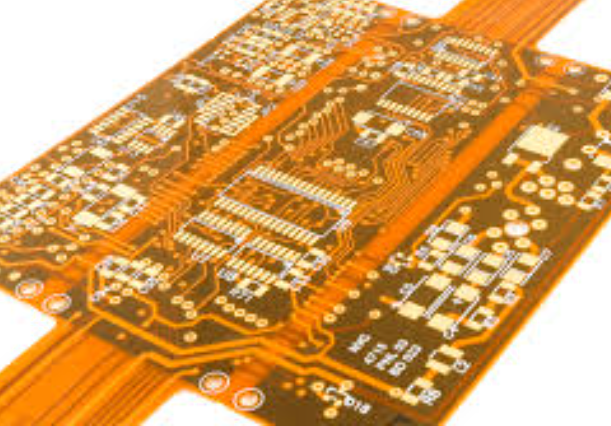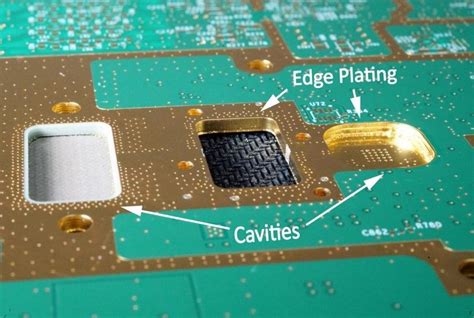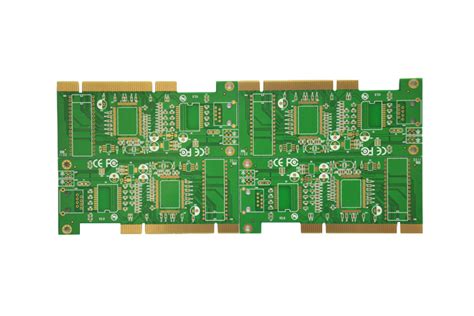Standard for flexible pcb
Benefits Of Using Flexible PCBs In Modern Electronics and Standard for flexible pcb
Flexible printed circuit boards (PCBs) have become increasingly prevalent in modern electronics, offering a myriad of benefits that enhance both the functionality and reliability of various devices.
One of the primary advantages of flexible PCBs is their ability to conform to complex shapes and fit into tight spaces,
which is particularly valuable in the design of compact and lightweight electronic devices. This adaptability allows engineers to create more innovative and ergonomic products, such as wearable technology, medical devices, and advanced consumer electronics.
In addition to their physical flexibility, flexible PCBs also provide significant improvements in terms of durability and reliability.
Traditional rigid PCBs are prone to damage from vibrations and mechanical stress, which can lead to circuit failures and reduced product lifespan. Conversely, flexible PCBs are designed to withstand such stresses, making them ideal for applications that require frequent movement or are subject to harsh environmental conditions. This resilience not only extends the life of the electronic device but also reduces maintenance costs and downtime.
Moreover, flexible PCBs contribute to enhanced electrical performance.
The ability to design circuits with shorter interconnections minimizes the risk of signal loss and electromagnetic interference, which is crucial for maintaining the integrity of high-speed data transmission. This feature is particularly beneficial in applications such as telecommunications, automotive electronics, and aerospace systems, where reliable and efficient signal transmission is paramount.
Another notable benefit of flexible PCBs is their potential for cost savings in both manufacturing and assembly processes.
The integration of multiple components and interconnections into a single flexible substrate can reduce the need for additional connectors and wiring, thereby simplifying the assembly process and lowering production costs. Furthermore, the reduced weight and volume of flexible PCBs can lead to savings in shipping and handling expenses, as well as a decrease in the overall material usage.
The versatility of flexible PCBs also extends to their compatibility with a wide range of materials and technologies.
They can be fabricated using various substrates, such as polyimide, polyester, and liquid crystal polymer, each offering unique properties that cater to specific application requirements. Additionally, flexible PCBs can be combined with rigid PCBs to create rigid-flex circuits, which provide the benefits of both technologies in a single, cohesive design. This hybrid approach is particularly advantageous in complex electronic systems that require both flexibility and structural support.
Furthermore, the environmental impact of flexible PCBs is generally lower compared to traditional rigid PCBs.
The use of less material and the potential for reduced energy consumption during manufacturing contribute to a more sustainable production process. Additionally, the extended lifespan and reliability of flexible PCBs can lead to fewer electronic waste products, aligning with the growing emphasis on environmentally responsible practices in the electronics industry.
In conclusion, the adoption of flexible PCBs in modern electronics offers numerous benefits that enhance the design, performance, and sustainability of various devices. Their ability to conform to intricate shapes, withstand mechanical stress, and improve electrical performance makes them an invaluable component in the development of cutting-edge technology. As the demand for more compact, reliable, and efficient electronic devices continues to grow, the role of flexible PCBs in meeting these requirements will undoubtedly become increasingly significant.

Design Guidelines For Flexible PCBs
Designing flexible printed circuit boards (PCBs) requires adherence to specific guidelines to ensure optimal performance and reliability. These guidelines are essential for accommodating the unique properties of flexible substrates, which differ significantly from their rigid counterparts.
To begin with, material selection is a critical aspect of flexible PCB design.
Polyimide is commonly used due to its excellent thermal stability, mechanical strength, and flexibility. However, designers must also consider the adhesive materials and copper foils, ensuring they are compatible with the intended application and environmental conditions.
Transitioning to the layout design, it is imperative to maintain a balance between flexibility and durability.
Trace routing should be carefully planned to avoid sharp bends and stress points, which can lead to mechanical failure. Gentle curves and staggered traces are recommended to distribute stress evenly across the board. Additionally, the use of hatched ground planes instead of solid ones can enhance flexibility while maintaining electrical performance. This approach reduces the overall stiffness of the PCB, allowing it to bend more easily without compromising its structural integrity.
Another crucial consideration is the placement of components.
Components should be positioned in areas with minimal bending to prevent mechanical stress and potential damage. For instance, placing components near the edges or in highly flexible regions should be avoided. Instead, they should be located in the central, more stable areas of the PCB. Furthermore, the use of surface-mount technology (SMT) is preferred over through-hole components, as SMT components are generally lighter and more suitable for flexible applications.
Thermal management is another vital aspect of flexible PCB design.
Flexible PCBs are often used in environments with varying temperatures, making it essential to account for thermal expansion and contraction. Designers should incorporate thermal reliefs and consider the coefficient of thermal expansion (CTE) of the materials used. Proper thermal management ensures that the PCB can withstand temperature fluctuations without experiencing mechanical or electrical failures.
In addition to thermal considerations, electrical performance must be meticulously planned.
Signal integrity is paramount, especially in high-speed applications. Designers should minimize the length of signal traces and use controlled impedance techniques to reduce signal loss and crosstalk. Shielding and grounding strategies should also be employed to protect sensitive signals from electromagnetic interference (EMI). These measures are crucial for maintaining the integrity of the signals and ensuring reliable operation of the flexible PCB.
Manufacturability is another key factor in the design process.
Designers must collaborate closely with manufacturers to ensure that the design can be produced efficiently and cost-effectively. This includes considering the limitations of the manufacturing process, such as minimum trace widths, spacing, and via sizes. Additionally, designers should provide clear and detailed documentation, including Gerber files, drill files, and assembly drawings, to facilitate smooth production.
Finally, testing and validation are essential steps in the design of flexible PCBs.
Prototypes should be rigorously tested under various conditions to ensure they meet the required performance and reliability standards. This includes mechanical testing to assess flexibility and durability, as well as electrical testing to verify signal integrity and functionality. Any issues identified during testing should be addressed and rectified before mass production.
In conclusion, designing flexible PCBs involves a comprehensive understanding of material properties, layout considerations, thermal management, electrical performance, manufacturability, and testing. By adhering to these guidelines, designers can create flexible PCBs that meet the demands of modern electronic applications, ensuring reliability and performance in a wide range of environments.

Common Applications Of Flexible PCBs In Various Industries
Flexible printed circuit boards (PCBs) have become a cornerstone in modern electronics, offering a versatile and reliable solution for a wide range of applications across various industries.
Their unique ability to bend, fold, and twist without compromising performance makes them indispensable in scenarios where traditional rigid PCBs would be impractical or impossible to use. As we delve into the common applications of flexible PCBs, it becomes evident that their adaptability and efficiency are key drivers of innovation and technological advancement.
In the consumer electronics industry, flexible PCBs are ubiquitous, playing a crucial role in the development of compact and lightweight devices.
Smartphones, tablets, and wearable technology such as smartwatches and fitness trackers all benefit from the space-saving and design flexibility that flexible PCBs provide. These devices often require intricate circuitry to fit within limited spaces, and the ability of flexible PCBs to conform to various shapes and contours allows for more innovative and ergonomic designs.
Furthermore, the durability of flexible PCBs ensures that these devices can withstand the rigors of daily use, including bending and twisting, without suffering from performance degradation.
Transitioning to the automotive industry, flexible PCBs are equally vital. Modern vehicles are equipped with a plethora of electronic systems, from advanced driver-assistance systems (ADAS) to infotainment and navigation units.
Flexible PCBs are used extensively in these applications due to their ability to endure harsh environmental conditions, such as extreme temperatures and vibrations.
For instance, they are often found in airbag systems, where their reliability and flexibility are critical for ensuring passenger safety.
Additionally, the automotive industry is increasingly adopting electric vehicles (EVs), which rely heavily on flexible PCBs for battery management systems and power distribution networks, further underscoring their importance.
In the medical field, the demand for miniaturized and reliable electronic devices has led to the widespread adoption of flexible PCBs.
Medical devices such as pacemakers, hearing aids, and diagnostic equipment benefit from the compactness and flexibility of these circuits. Flexible PCBs enable the creation of small, lightweight, and comfortable devices that can be worn or implanted in the human body. Moreover, their biocompatibility and resistance to sterilization processes make them suitable for use in various medical applications, ensuring patient safety and device longevity.
The aerospace and defense sectors also leverage the advantages of flexible PCBs.
In these industries, the need for lightweight and reliable electronic systems is paramount. Flexible PCBs are used in a variety of applications, including satellite systems, avionics, and military communication devices. Their ability to withstand extreme conditions, such as high altitudes, radiation, and rapid temperature changes, makes them ideal for aerospace and defense applications. Additionally, the reduced weight of flexible PCBs contributes to overall weight savings in aircraft and spacecraft, which is a critical factor in these industries.
Lastly, the industrial sector benefits from the robustness and adaptability of flexible PCBs.
Industrial automation systems, robotics, and control systems often require complex and reliable circuitry that can operate in demanding environments. Flexible PCBs provide the necessary durability and flexibility to meet these requirements, ensuring consistent performance and reducing maintenance costs.
In conclusion, the common applications of flexible PCBs across various industries highlight their indispensable role in modern technology. From consumer electronics to automotive, medical, aerospace, defense, and industrial sectors, flexible PCBs offer unparalleled advantages in terms of design flexibility, durability, and reliability. As technology continues to evolve, the demand for flexible PCBs is expected to grow, driving further innovation and enabling the development of more advanced and efficient electronic systems.

Challenges And Solutions In Manufacturing Flexible PCBs
Manufacturing flexible printed circuit boards (PCBs) presents a unique set of challenges that differ significantly from those encountered in the production of traditional rigid PCBs. One of the primary challenges is the material selection. Flexible PCBs are typically made from polyimide or polyester films, which offer the necessary flexibility but also introduce complexities in handling and processing. These materials are more sensitive to temperature and mechanical stress, requiring precise control during manufacturing to prevent damage and ensure reliability.
Another significant challenge is the design complexity.
Flexible PCBs often need to fit into compact and irregularly shaped spaces, necessitating intricate design work. This complexity is compounded by the need to maintain electrical performance while accommodating the mechanical flexibility. Designers must carefully consider factors such as bend radius, dynamic flexing, and the potential for mechanical fatigue. Advanced design software and simulation tools are essential in addressing these issues, allowing for the optimization of both electrical and mechanical properties.
The manufacturing process itself also poses challenges.
Traditional PCB manufacturing techniques, such as drilling and plating, must be adapted for flexible materials. For instance, laser drilling is often used instead of mechanical drilling to create vias, as it provides greater precision and reduces the risk of damaging the flexible substrate. Additionally, the plating process must be carefully controlled to ensure uniform coverage and adhesion, which is more difficult to achieve on flexible materials.
Quality control is another critical area where challenges arise.
Flexible PCBs are more prone to defects such as delamination, cracking, and warping. To mitigate these risks, manufacturers employ rigorous testing and inspection protocols. Automated optical inspection (AOI) and X-ray inspection are commonly used to detect defects that may not be visible to the naked eye. Furthermore, electrical testing is conducted to ensure that the circuits function correctly under both static and dynamic conditions.
Despite these challenges, several solutions have been developed to improve the manufacturing process and enhance the reliability of flexible PCBs.
One such solution is the use of advanced materials. High-performance polyimide films with enhanced thermal and mechanical properties have been developed, offering greater durability and reliability. Additionally, the use of adhesive-less laminates can reduce the risk of delamination and improve overall performance.
Process optimization is another key area of focus.
Manufacturers are continually refining their processes to improve yield and reduce defects. For example, controlled environment manufacturing, where temperature and humidity are tightly regulated, can significantly reduce the risk of defects caused by environmental factors. Moreover, advancements in automation and robotics are helping to improve precision and consistency in the manufacturing process.
Collaboration between designers and manufacturers is also crucial in overcoming the challenges associated with flexible PCBs. By working closely together, they can ensure that the design is optimized for manufacturability and that potential issues are identified and addressed early in the development process. This collaborative approach can lead to more efficient production and higher-quality end products.
In conclusion, while the manufacturing of flexible PCBs presents several challenges, ongoing advancements in materials, processes, and collaboration are helping to address these issues. By leveraging these solutions, manufacturers can produce flexible PCBs that meet the demanding requirements of modern electronic devices, ensuring both performance and reliability.







